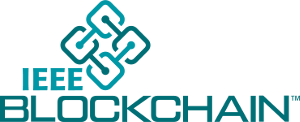IEEE Blockchain Technical Briefs - January 2020
A collection of short technical articles
Design Principles for Migrating from Traditional Systems to Blockchain Systems
By Mohammad Saidur Rahman, RMIT University, Australia; Ibrahim Khalil, RMIT University, Australia; Abdelaziz Bouras, Qatar University, Qatar; and Mohammed Atiquzzaman, Senior Member, IEEE, University of Oklahoma, USA
Blockchain is a distributed database technology that builds on a tamper-proof list of time-stamped transaction records. The data structure of blockchain is a chained list of blocks. Each block contains a hash of the previous block’s representation, thus creating the chain. As a result, historical transactions in the blockchain cannot be deleted or altered without invalidating the chain of hashes. With a combination of computational constraints and incentive schemes (e.g. Proof-of-Work (PoW) in Bitcoin) for block creation, the tampering and revision of the information in the blockchain can be prevented.
Blockchain-based Solution for Managing Renewable-based Microgrids
By Muyi Yang, University of Technology Sydney (UTS), Australia, Data61, CSIRO, Australia; Xiwei Xu, University of New South Wales (UNSW), Australia, Data61, CSIRO, Australia; Shiping Chen, University of New South Wales (UNSW), Australia, Data61, CSIRO, Australia; and Liming Zhu, University of New South Wales (UNSW), Australia, Data61, CSIRO, Australia
Renewable-based microgrids are considered attractive options for redressing the challenges of energy access and climate change currently faced by the energy sectors worldwide. Their attractiveness becomes even greater in Asia-Pacific countries. In these cases, almost half a billion people still have no access to electricity - most of which live in isolated islands or remote villages that makes grid-extensions to these areas less cost-effective. Additional stimulus for renewable-based microgrids also come from significant oil price fluctuation in recent years, making diesel less attractive than renewables (particularly, wind and solar) for electricity generation.
Bitcoin Double-Spending Profitability Analysis
By Ehab Zaghloul; Tongtong Li; and Jian Ren, Michigan State University (MSU), USA
Blockchain is a technology invented to enable the decentralized digital currency, Bitcoin, for secure and private asset transfer and storage. As a cryptocurrency, Bitcoin should be difficult to double-spend. This paper analyzes the profitability of double-spending Bitcoin over a blockchain. We first introduce the major attacks that can be performed to double-spend Bitcoin. Next, we derive the profitability for attackers to perform such attacks. We provide a quantitative characterization between the risk of double-spending and the number of blocks to be added to the blockchain before a transaction is accepted. Our findings are useful to both Bitcoin users and miners. Miners can obtain more insight into the mining process and potential methods to maximize their profits.
Profit from Two Bitcoin Mining Tactics: Towing and Shutdown
By Ehsan Meamari; and Chien-Chung Shen, Department of Computer and Information Sciences, University of Delaware, USA
Since Bitcoin's inception in 2008, it has became attractive investments for both trading and mining. To mine Bitcoins, a miner has to invest in computing power and pay for electricity to solve cryptographic puzzles for rewards, if it becomes the first to solve a puzzle, paid in Bitcoin. Given that mining is such a resource intensive effort, miners seek new strategies trying to make the mining process more profitable. One obvious strategy is to adopt faster and/or more energy-efficient compute hardware. In addition, miners could launch attacks, such as Selfish and Withholding, to earn more Bitcoins. In this article, we introduce two new tactics termed Shutdown and Towing and analyze their profitability of earning more Bitcoins. In the following, we first review a simple background, and then present the two tactics.
2018-2020 IEEE Blockchain Technical Briefs Editorial Board
Subscribe to the IEEE Blockchain Technical Briefs
Join our Blockchain Technical Community and receive our Technical Briefs by email.
IEEE Blockchain Technical Briefs Editorial Board
Gora Datta, FHL7, SMIEEE, SMACM, Managing Editor
2024 Editorial Team
Justin Y. Shi, PhD, Editor-in-Chief
Boleslaw K. Szymanski, PhD
R.L. Shankar, PhD
Imran Bashir
Nicolae "Nicu" Goga, PhD
Constantin “Viorel” Marian, PhD
View the 2023 IEEE Blockchain Technical Briefs Editorial Board
View the 2022 IEEE Blockchain Technical Briefs Editorial Board
View the 2018-2020 IEEE Blockchain Technical Briefs Editorial Board
Past Issues
Read the top five most popular IEEE Blockchain Technical Briefs articles.
Read more (PDF, 731 KB)























